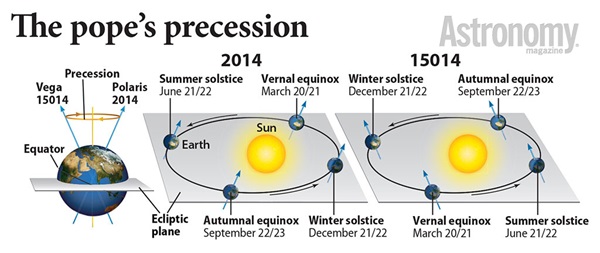Key Takeaways:
- The Gregorian calendar accounts for the discrepancy between the length of a solar day and a solar year (approximately 365.25 days).
- The calendar also addresses the difference between a sidereal year and a tropical year, caused by Earth's axial precession, a 26,000-year cycle.
- Leap years, added to the Gregorian calendar, are crucial for maintaining synchronization between the calendar and the seasons.
- Without the Gregorian calendar's leap year adjustments, the June solstice in 15014 would mark the beginning of winter in the Northern Hemisphere, instead of summer.
Precession causes the latter calendar conundrum (the periodic wobble of Earth’s axis in a 26,000-year cycle). The June solstice — the moment when the North Pole of Earth’s axis is tilted as near as possible toward the Sun and summer officially begins in the Northern Hemisphere — occurs on or about June 21 each year. Exactly one sidereal year later, the axis at the North Pole doesn’t point precisely toward the Sun. The tropical year, when the North Pole is again pointed toward the Sun, ended 20 minutes earlier! In order for our calendar to be in sync with the seasons, we must base it on a tropical year.
Our current-day Gregorian calendar (named after Pope Gregory XIII, who established it in 1582) addresses both problems — the disproportion between day and year and the effect of precession. Based on the tropical year, the Gregorian calendar automatically ties itself with the seasons by the use of leap years. An extra day is added to February in each year divisible by four. The leap year system gets an extra tweak by excluding century years not divisible by 400 (1700, 1800, and 1900 were not leap years; 2000 was).
If it weren’t for this leap year fix, June 21, 15014, would indeed usher in winter in the Northern Hemisphere. Instead, Northern Hemisphere residents will still be welcoming summer on that date.
Contributing Editor










